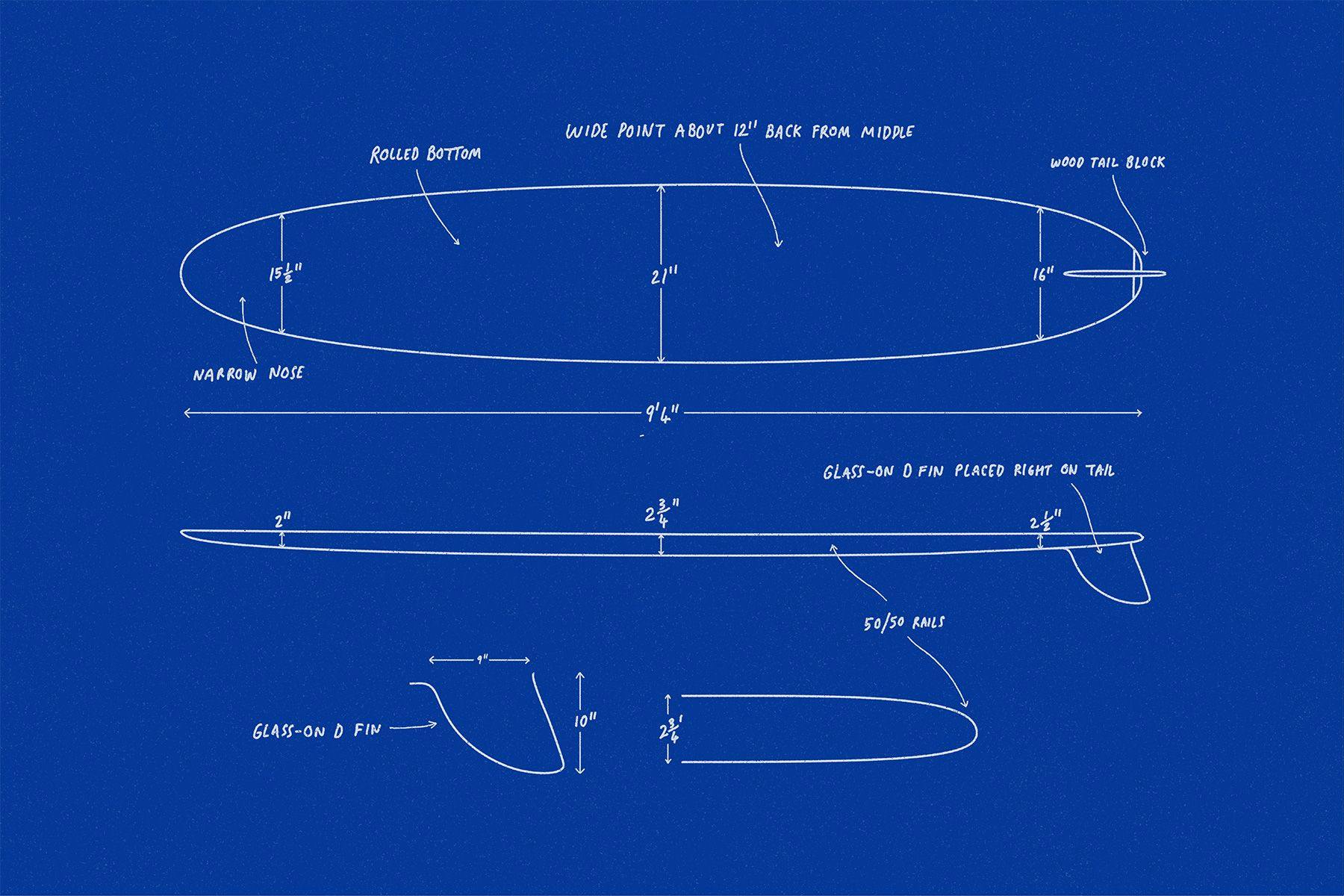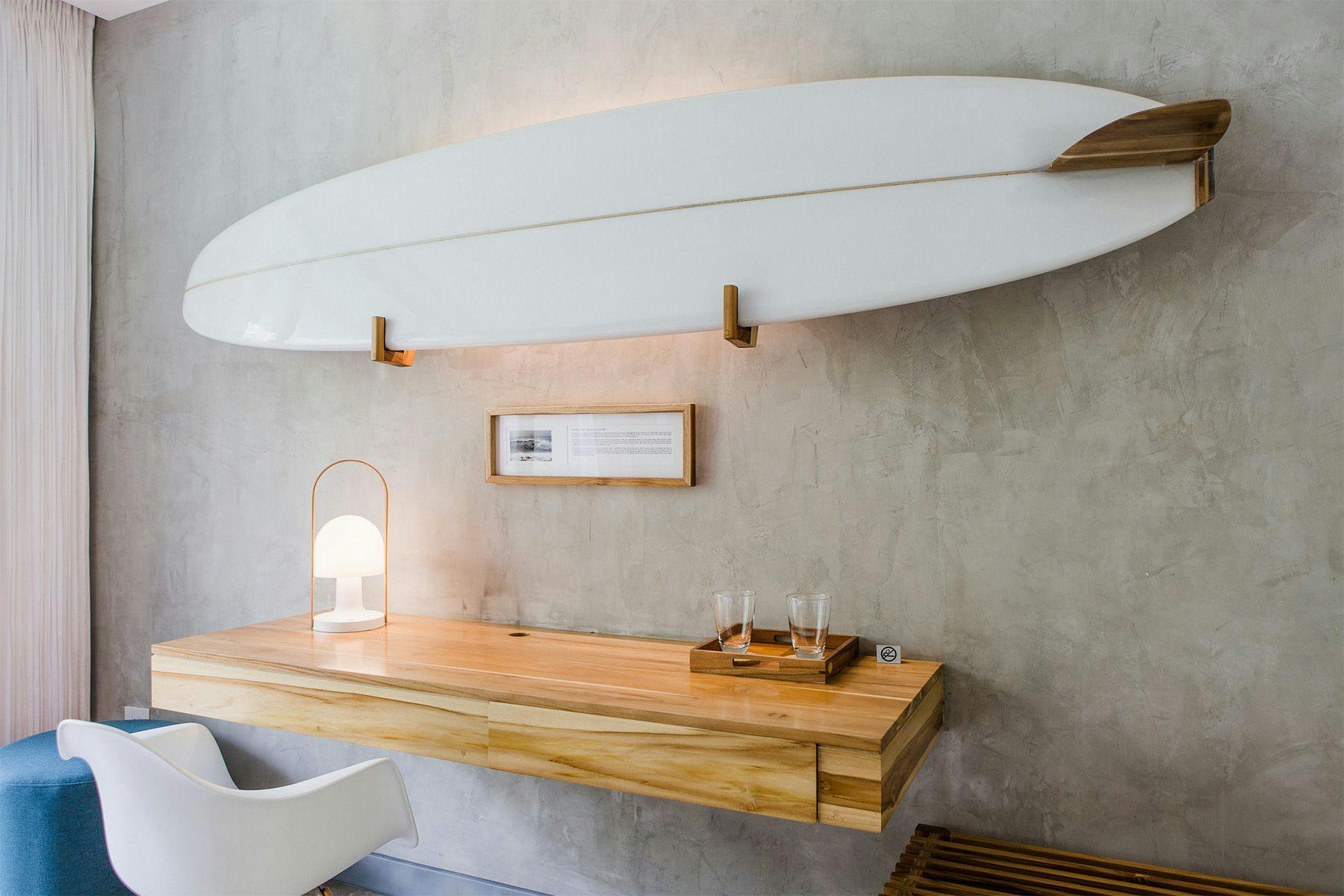SurfboardsHistory of Surfboard Design: Dale Velzy and The Pig

The revolutionary “pig” model, designed by Dale Velzy in 1955, was the main development of the decade, and was an essential turning point in the way surfers rode the waves. Velzy’s innovation introduced a range of creative growth to surfing and, as a result, the Pig became the surfboard of the moment in California. Due to the popularity of the design, the metamorphosis of surfing culture post WWII, and Velzy’s knack for marketing, the 1950s was also a period when surfboards truly found their way into the retail market and surfboard shaping became an industry.
The Historical Context
After World War II, surfboard design and manufacturing techniques developed at pace, mainly due to the accessibility of new materials (like fiberglass and polyester resin) that span off wartime aerospace developments. Balsa and redwood remained the preference, but were now being combined with “hi-tech” substances and fabrics to make surfboards more durable and waterproof. Up until the 1950s, surfers were in the process of mastering the art of riding the face of the wave, yet were mostly concerned with speed and control. However, due to the freedom these new technologies provided, different “branches” of surfing started to emerge, walking hand-in-hand with the shaper’s design interests.
Most surfboards either bore a resemblance to planks or hollow boards, but once shapers started to apply different principles of design (particularly rocker and foil) that improved board speed and control, and decreased weight, surfers were tempted into trying more than just trimming down the line. Eventually, design improvements allowed surfers to ride up and down the face, which led to some of the first true cutbacks. As a result of this relentless evolution in ways of riding waves, the vanguard of the 40s introduced new design features (encompassed in the Malibu “chip”) that would make manoeuvrability a prime objective for surfers.
Why Was This Development Necessary?
For the most part, shapers were making the most of post-war materials developments, and surfboard construction explored what was available (as far as materials, tools, and technologies go) to the fullest. Hence, the motivation for further developments in surfboard design were founded on the sport’s natural evolution and surfers’ enthusiasm to push the limits of wave riding – which were now directly connected to maneuverability. During the previous decade, neither speed nor control seemed to be an issue. But with the development in design and a revolution in the postwar surf culture, came the craving for more versatility in waveriding, which turned maneuvers into the primary objective of those who wanted to push the envelope of high-performance surfing. With this desire for turns over straight lines came the need to design a surfboard that would allow a surfer to work with the board’s tail in order to pivot, as well as ride even deeper into the pocket so as to make the most of the wave’s power. Such designs were based on the fact that the previous decade’s favorite, the Malibu chip, would often catch a rail or nosedive when turned sharply.

Who Was Involved?
As one of the key characters of the 1950s surf scene in California, Dale Velzy is credited not only with giving birth to the “pig” model but also for the way in which he expanded the concept of boardmaking by turning it from a largely a DIY activity into an industry. Born and raised in Hermosa Beach, California, Velzy started surfing at the age of 10 and not long after, at the staggeringly young age of 11, was shaping his own surfboards. Partially inspired by his grandfather’s woodworking skills (and assisted by his tools), Velzy took a commercial approach to boardmaking in 1949 when he opened Velzy Surfboards, which is considered to be the world’s first surf shop. He soon turned his personal brand into a successful business, and with shops established in Hawaii and California he eventually needed extra help. In 1954 Velzy partnered with shaper Hap Jacobs and the pair opened a series of Velzy-Jacobs Surfboards branches across California and Hawaii. He designed and popularized the Pig in 1955 – together with other less-popular models including the Bump and the Banjo – but shortly after, in 1959, his empire of shops was shut by the IRS as Velzy was charged with tax evasion. Despite burning brightly but briefly, Dale Velzy’s contributions to surfboard design remain significant.
Design Details
With the Pig, Dale Velzy reversed the plan shape, practically flipping the board back-to-front. The design – constructed 100% from balsa, no redwood, and laminated with fiberglass – was around 10ft long, weighed 20-30 pounds and featured a wide and blunt tail with relatively narrow nose. This allowed for faster turns and better manoeuvrability, thus fitting into different sections of the wave. The main design difference between the Pig and its predecessors was its curved rail line; the pulled in nose and the board’s wide point being brought towards the tail – when combined with an oversized skeg (fin) placed right at the tail block – made it very easy to pivot. Now, surfers could use the board to go up and down the face, work the nose, and cutback; manoeuvring on the wave instead of just positioning and angling down the line. Moreover, the Pig design featured softer rails and Velzy’s surfboards were known for their high-quality shaping and glassing jobs – all motives that led to them becoming the surfboard of the moment around 1950s California.

Specifications*
Avg Minimum Avg Maximum Length 9’4” 10’5”
Width
Nose 15 1/2” Midpoint 21” 22 1/2” Tail 16” 16” Thickness 2 3/4” 3 1/4” Weight 22 lb 40 lb
*Specifications based upon examples held in the collection of The Surfing Heritage Centre. Where details of volume are not available, weight has been specified.